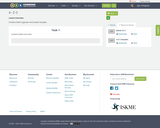
Contains blank organizer and student samples.
- Subject:
- Education
- Material Type:
- Lesson Plan
- Author:
- Stephanie Genco
- Date Added:
- 08/24/2018

Contains blank organizer and student samples.

This activity will allow students to explore some aspects of the political, economic, social, and cultural developments of major African empires from around 1500-1800 CE. It contains information about Songhai, Kongo, Asante, the Swahili Coast, and Ethiopia.

This exercise asks students to read excerpts about global migration and think about the factors that drive migration. Students will assess a series of statements to determine what factors encouraged or discouraged migration and map their analysis onto a map using + and all - symbols. The visual interpretation will help students better understand the push/pull factors involved with global migration movements of the 19th century.
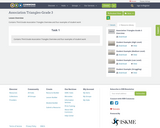
Contains Third Grade Association Triangles Overview and four examples of student work

Students will identify with characters in stories to understand that feelings can be shared between themselves, other characters, and other students in our World. Students will also identify the similarities and differences between two different texts in order to understand the main idea.
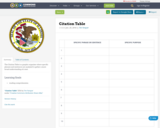
The Citation Table is a graphic organizer where specific phrases and sentences are analyzed to gather a more broad understanding of a text.
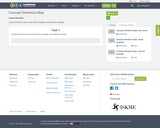
Contains teacher cover sheet, blank template, and student example.

Contains cover sheet, student example, and blank template.


This assignment uses to the story of Mulan to explore what is fact and what is fiction in Han China. The assignment asks students to consider the Disney version of Mulan and how this portrayal affects the accuracy of a Chinese folk story and specifically the story's Confucian values.
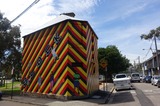
For this assignment, students will use a graphic organizer to think about how the geography and environment of a place have shaped the economy, culture, society, and politics of Mesopotamia, Mesoamerican, Andean societies as well as a society of their choice.
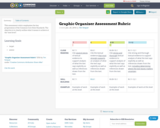
This assessment rubric emphasizes the key progressions of the Common Core State Standards. The objective is to clearly outline what it means to achieve at the "next level".
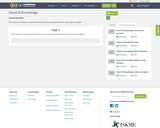
This resource contains an overview of the resource, printable forms, and student samples.
![Lenses of Vietnam: Protest in a Democracy [Inquiry Design Model (IDM) Unit Plan]](https://img.oercommons.org/160x134/oercommons/media/courseware/lesson/image/22Photograph_of_a_Female_Demonstrator_Offering_a_Flower_to_a_Military_Police_Officer22_by_Albert_R._Simpson_uOQkEc8.gif)
This inquiry takes students through an analysis and evaluation of the Compelling Question “Is protest important in a democracy?” using the Vietnam War as a lens to approach the topic. To accomplish this, students will become more media literate through evaluating sources, biases, perspectives, and the goals of creating media. Throughout the inquiry, students will engage in activities designed to promote and develop media literacy while analzying the Compelling Question and learning about the historical protests of the Vietnam Era.This inquiry is expected to take two weeks (10 periods) to complete: one 45-minute class period to stage the question, introduce the inquiry, and to review media literacy; two 45-minute class periods for each of the three supporting questions; and then three 45-minute class periods for students to write and research their argumentative thesis. If students are as of yet less familiar with media literacy, the instructor should add at least another class period, or more, introducing them more fully to this.The full unit, along with all materials and resources, is available as a PDF attachment.

This unit engages students in a variety of activities that analyze and reflect on the role of social media in our everyday lives. This includes options for collaborative group work, reading nonfiction articles, a design challenge and presentations to communicate ideas. The unit also includes a formal writing assessment option that aligns with the Common Core State Writing Standards. Activities can be adapted or combined in a variety of ways to support student reflection and analysis. These lessons were piloted in 9th grade English classes but are suitable or a range of secondary students.
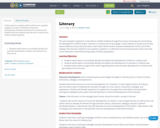
In this resource, students will be asked to use a graphic organizer in order to identify and track the development of theme and character in a literary text. Students will use evidence from the text to construct an evidence based response.
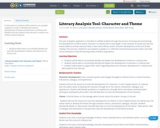
In this resource, students will be asked to use a graphic organizer in order to identify and track the development of theme and character in a literary text. Students will use evidence from the text to construct an evidence based response.
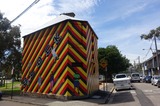
This recourse contains a chart and asks students to compare the Cherokee tribes that stayed in the Appalachians to the tribes that migrated across the US to Oklahoma during the Trail of Tears as well as to the Great Plains tribes who were already in the region. The comparison chart contains a section for culture, agriculture, local governance, and treaties with the US government.
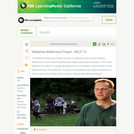
In this video segment from WILD TV, a guide describes how to camouflage a personë_í__ body to avoid being detected in the wilderness.
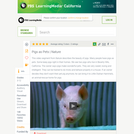
In this video segment from Nature, animal lovers talk about their experiences having pigs as pets.